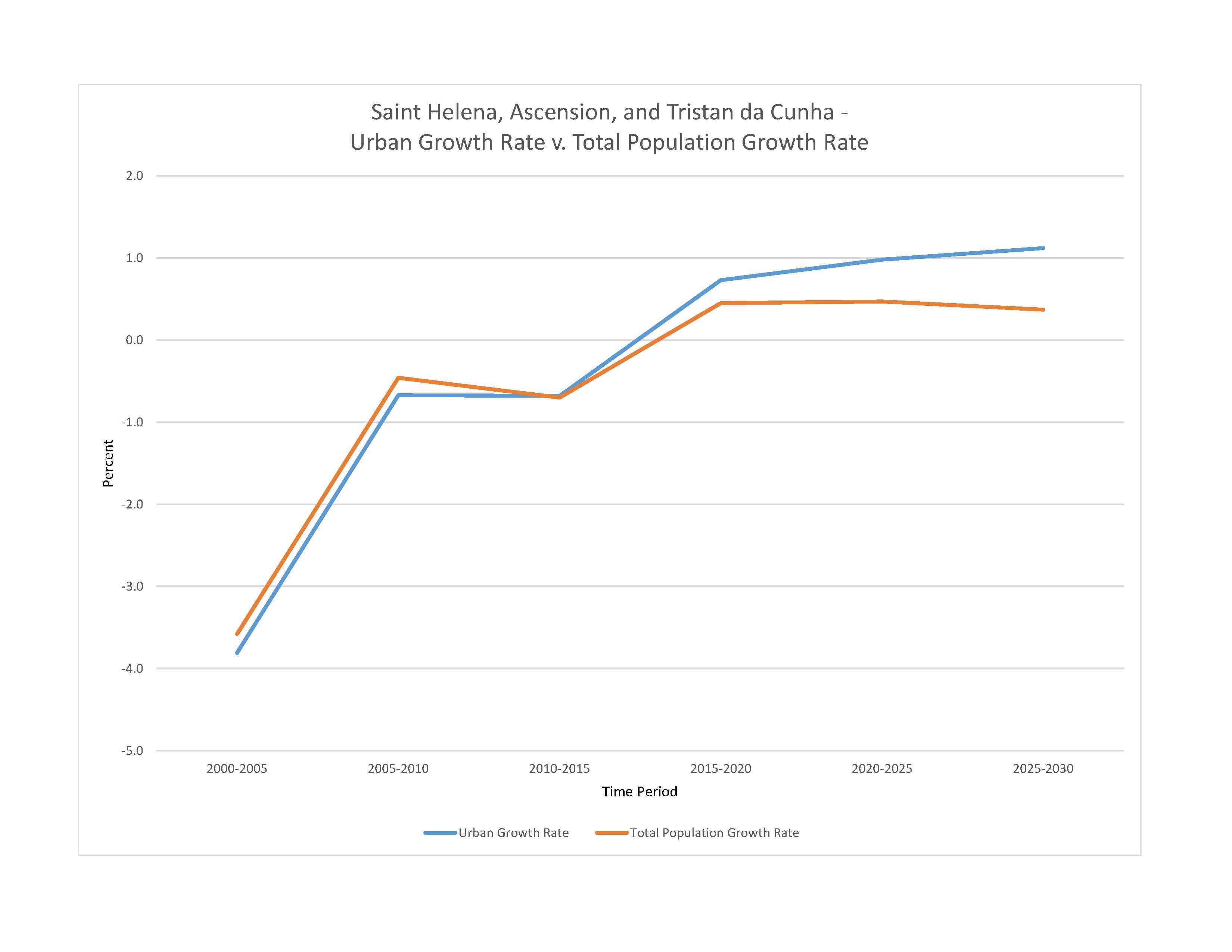
7,935 (2023 est.)
note: Saint Helena's Statistical Office estimated the resident population to be 4,439 in 2021; only Saint Helena, Ascension, and Tristan da Cunha islands are inhabited, none of the other nearby islands/islets are
noun: Saint Helenian(s)
adjective: Saint Helenian
note: referred to locally as "Saints"
St. Helena 82.1%, UK 7.6%, South Africa 3.6%, Ascension 2.8%, other 3.9% (2021 est.)
note: data represent population of Saint Helena by country of birth
English
Protestant 69.4% (includes Anglican 63.2%, Baptist 2.3%, Salvation Army 2%, Seventh Day Adventist 1.9%), Jehovah's Witness 3.8%, Roman Catholic 2.2%, New Apostolic 1.6%, other Christian 1.4%, other 1.1%, none 9%, unspecified 11.4% (2021 est.)
note: data represent Saint Helena only
The vast majority of the population of Saint Helena, Ascension, and Tristan da Cunha live on Saint Helena. Ascension has no indigenous or permanent residents and is inhabited only by persons contracted to work on the island (mainly with the UK and US military or in the space and communications industries) or their dependents, while Tristan da Cunha – the main island in a small archipelago – has fewer than 300 residents. The population of Saint Helena consists of the descendants of 17th century British sailors and settlers from the East India Company, African slaves, and indentured servants and laborers from India, Indonesia, and China. Most of the population of Ascension are Saint Helenians, Britons, and Americans, while that of Tristan da Cunha descends from shipwrecked sailors and Saint Helenians.
Change in Saint Helena’s population size is driven by net outward migration. Since the 1980s, Saint Helena’s population steadily has shrunk and aged as the birth rate has decreased and many working-age residents left for better opportunities elsewhere. The restoration of British citizenship in 2002 accelerated family emigration; from 1998 to 2008 alone, population declined by about 20%.
In the 2010s, the population experienced some temporary growth, as foreigners and returning Saint Helenians, came to build an international airport, but numbers faded as the project reached completion and workers departed. With the airport fully operational, increased access to the remote island has the potential to boost tourism and fishing, provide more jobs for Saint Helenians domestically, and could encourage some ex-patriots to return home. In the meantime, however, Saint Helena, Ascension, and Tristan da Cunha have to contend with the needs of an aging population. The elderly population of the islands has risen from an estimated 9.4% in 1998 to 18% in 2022.
0-14 years: 14.48% (male 586/female 563)
15-64 years: 66.87% (male 2,640/female 2,666)
65 years and over: 18.65% (2023 est.) (male 753/female 727)
total dependency ratio: 68.6 NA
youth dependency ratio: 23.6 NA
elderly dependency ratio: 45.1 NA
potential support ratio: 2.2 (2021) NA
total: 44.7 years (2023 est.)
male: 44.5 years
female: 44.9 years
0.11% (2023 est.)
9.3 births/1,000 population (2023 est.)
8.2 deaths/1,000 population (2023 est.)
0 migrant(s)/1,000 population (2023 est.)
Saint Helena - population is concentrated in and around the capital Jamestown in the northwest, with another significant cluster in the interior Longwood area; Ascension - largest settlement, and location of most of the population, is Georgetown; Tristan da Cunha - most of the nearly 300 inhabitants live in the northern coastal town of Edinburgh of the Seven Seas
urban population: 40.7% of total population (2023)
rate of urbanization: 0.98% annual rate of change (2020-25 est.)

1,000 JAMESTOWN (capital) (2018)
at birth: 1.06 male(s)/female
0-14 years: 1.04 male(s)/female
15-64 years: 0.99 male(s)/female
65 years and over: 1.04 male(s)/female
total population: 1.01 male(s)/female (2023 est.)
total: 18.6 deaths/1,000 live births (2023 est.)
male: 22.4 deaths/1,000 live births
female: 14.7 deaths/1,000 live births
total population: 80.7 years (2023 est.)
male: 77.8 years
female: 83.7 years
1.61 children born/woman (2023 est.)
0.78 (2023 est.)
N/A
improved: urban: N/A
rural: N/A
total: 99.1% of population
unimproved: urban: N/A
rural: N/A
total: 0.9% of population (2020)
N/A
N/A
improved: urban: N/A
rural: N/A
total: 100% of population
unimproved: urban: N/A
rural: N/A
total: 0% of population (2020)
N/A
N/A
total population: NA
male: NA
female: NA
NOTE: The information regarding Saint Helena Ascension and Tristan Da Cunha on this page is re-published from the 2024 World Fact Book of the United States Central Intelligence Agency and other sources. No claims are made regarding the accuracy of Saint Helena Ascension and Tristan Da Cunha 2024 information contained here. All suggestions for corrections of any errors about Saint Helena Ascension and Tristan Da Cunha 2024 should be addressed to the CIA or the source cited on each page.
This page was last modified 04 May 24, Copyright © 2024 ITA all rights reserved.